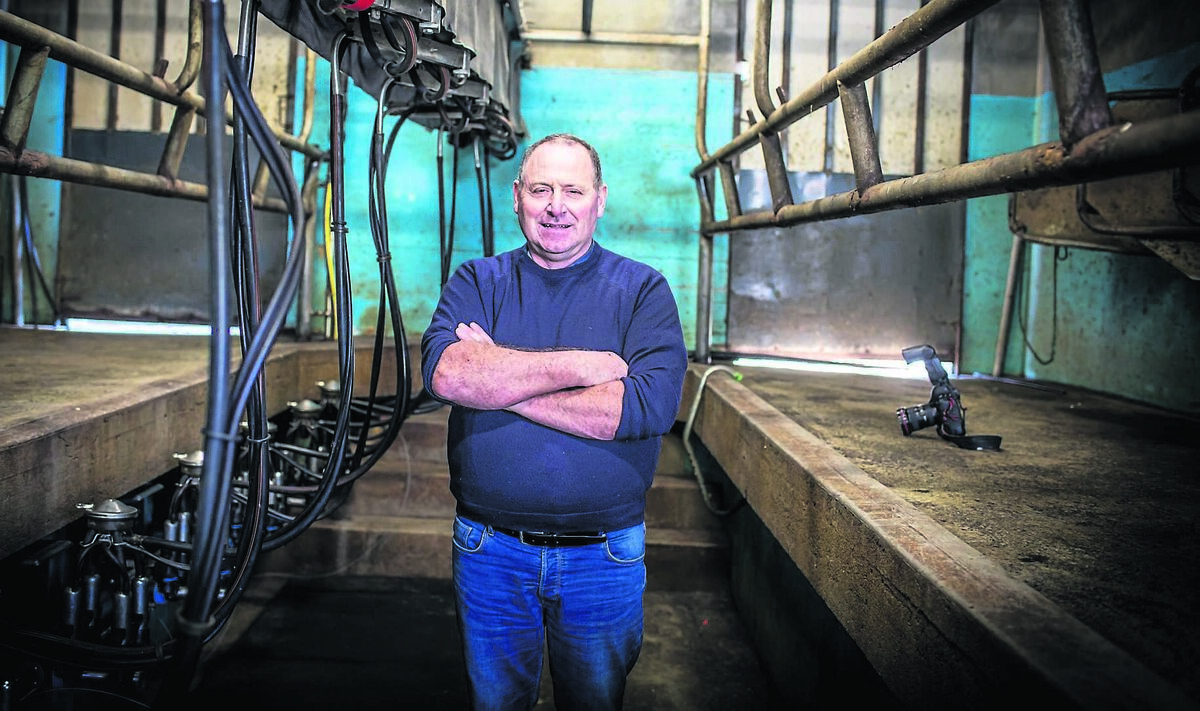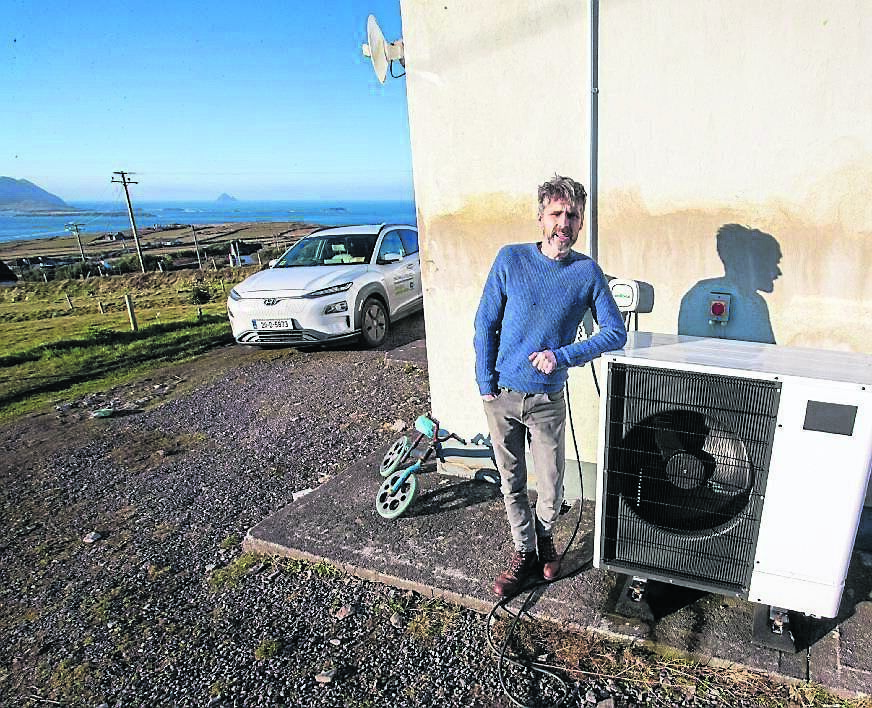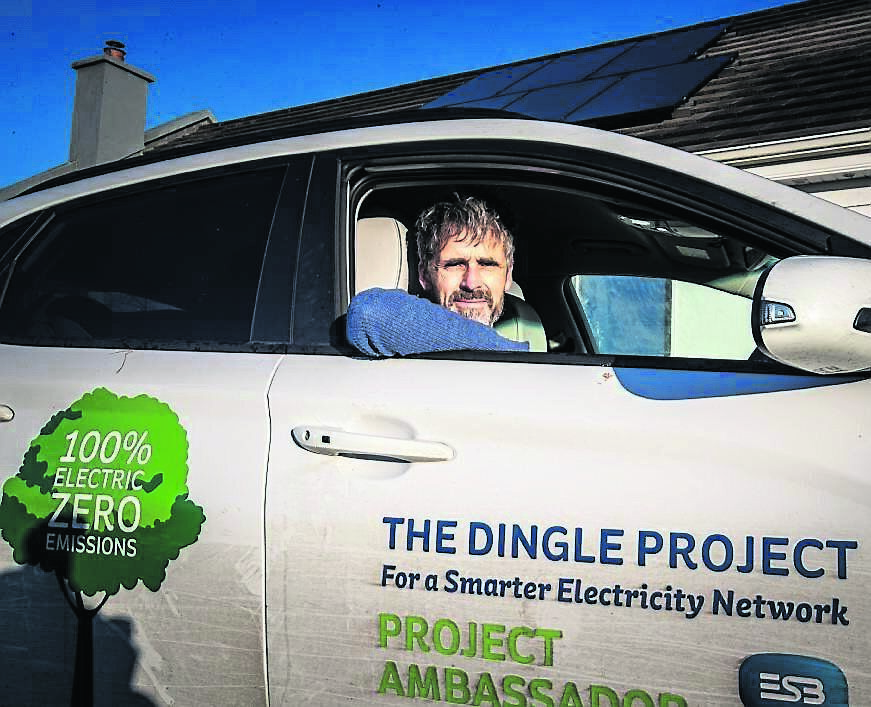Where we get our energy: Dingle Project families showing the way for low-carbon future

World Health Organization consultant Rory McKeown, Ceathrú, one of five ESB Networks Dingle Project ambassadors on the Dingle peninsula whose 1990s bungalow got a full retrofit, including hurricane-proof solar panels. Picture: Neil Michael
West Kerry Dairy cattle and sheep farmer Dinny Galvin has always had an interest in electricity and how it is created.
If he hadn’t taken over the family farm when his father died, he could well have become an engineer.
“Life takes different turns sometimes and that's just the way it worked out for me,” the 51-year-old father-of-five from Lispole, on the Dingle Peninsula, said.
“My dad passed away and I was the head of the house if you know what I mean.”
When Dinny built his family’s home in 2006, he had 10 years of experience in the construction industry behind him, and as well as making sure his walls were properly insulated, he also installed an air-to-heat pump.

“I'd say we were one of the first on the peninsula,” he said.
“And for the 16 years that the heat pump was working, we were actually heating the water for myself, Nicola, and the children as they were coming along for something like €650-a-year.
“Anybody I said that to just wouldn't believe me.”
Dinny is one of a number of people involved in the three-year pilot project initiated by the ESB Networks to help the energy supplier understand how people use low carbon technologies.
The Dingle Project, as it is called, will conclude at the end of January 2022.
Claire McElligott, community engagement manager at ESB Networks, says it will assist ESB Networks in the design and build of a “resilient, low carbon, future-fit electricity network”.
And she said the results will “play a part in helping society achieve our climate action targets as laid out by the Government”.
Among things done for the project, the company installed 25 Solar PV systems on houses, as well as five air source heat pumps — including one into Dinny’s home — and it carried out deep retrofits of two homes.
It also leased 17 electric vehicles for one year and installed home energy monitoring equipment at all 35 trial sites on the Dingle Peninsula.
The biggest noticeable savings for Dinny — one of five “ambassadors” for the project — was the electric vehicle (EV), a Hyundai Kona Electric.
He reckons the family’s diesel car was costing them around €80-a-week, but the Kona cost them no more than around €10 to run with a range of around 480km on a single charge.

“We’ve five children, and that’s a lot of toing and froing from one evening football training or dancing lesson to another most days of the week,” he said.
But he said he would be unlikely to buy one due to the cost.
Another drawback was the lack of EV chargers.
“The infrastructure isn't there yet,” he said.
“We have the charger at home and that's great but on long journeys, we found that a lot of chargers weren’t working and that's a stumbling block,” he said.
On the plus side, he said he found the savings from an EV to be “unbelievable”.
He did a trip to Glasgow for the 26th UN Climate Change Conference — Cop26 — and the west Kerry to Belfast leg of the trip cost him just €12.
When World Health Organization consultant and microbiologist Rory McKeown and his wife Bláithín — an environmentalist — moved into their 1990s bungalow in February 2018 with their two children Art and Lughan, they needed to do a fair amount of work to improve its energy rating.
“We live on possibly the most windswept part of the western seaboard for all of Europe, up on the Ceathrú, on the Dingle Peninsula, overlooking the blaskets in Dún Chaoín,” he said.
“We get wind here all the time and horrendous wind pretty often.

“Having an open fireplace was like having an open window during the winter.
“The gales would just howl down through the chimney.”
They replaced the open fire with a wood-burning stove but reckoned they were at least five to 10 years away from being able to afford the extra work they needed to do.
And then they found out about the ESB project and their environmental prayers were answered.
First came the (hurricane-proof) solar panels, installed in February 2019, and eight months ago, the ESB Networks installed a 5KW house battery management system in the attic which started to store electricity — albeit for no longer than a few days — from the panels.
After a full retrofit by the ESB Networks, which included replacing the windows with triple-glazed windows and having the cavity walls insulated, the couple were also given an air-to-heat pump to replace their oil burner.

“It’s too early to say exactly what we have saved because we would need to wait until we have gone through a winter and a summer to get an accurate estimate,” he said.
“But if you add all the measures together, we have probably saved around €1,500, but that is just a very rough estimate.”











